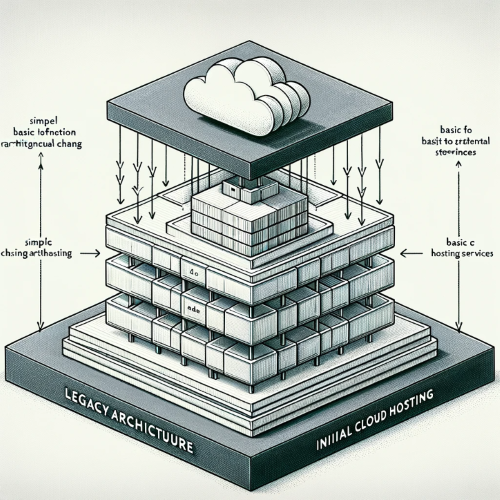Digital CIOs are consistently striving for excellence. Their ultimate goal? The ‘Golden Ratio’ – a seamless blend of Systems, Processes, and Value Creation. This balance is crucial, fostering cycles of growth and innovation. Yet, achieving this ideal mix presents considerable challenges. An overabundance of systems can hinder a company, while too few may lead to stagnation and missed opportunities. The integration of Cloud PACS with digital marketing and patient engagement exemplifies this delicate balance, proving that basic ‘imaging’ capabilities are no longer adequate in today’s healthcare environment.
The Evolving Patient-Consumer Experience
We stand at a critical juncture in technology evolution, where the distinction between patients and consumers is increasingly fading. Modern individuals expect their healthcare experiences to mirror the convenience and efficiency of consumer interactions. Consider the streamlined process of Starbucks’ mobile ordering system; if coffee can be ordered this effortlessly, why should healthcare processes lag? The outdated methods of repetitive form-filling and returning for CD-ROMs of medical images highlight a significant gap that needs addressing.
The Quest for Balance
The healthcare IT landscape often presents a choice between comprehensive, all-encompassing solutions and a mosaic of specialized systems. The former, though simple, can lead to inefficiencies in unique tasks, while the latter, though customizable, risks becoming overly complex. The ‘Golden Ratio’ is achieved by harmonizing these extremes, selecting a few well-integrated systems that offer the best of both worlds, representing the zenith of digital strategy.

Case Study: A Model of Virtuous Integration
OmniPACS recently enhanced a patient engagement workflow within a prominent Orthopedic network. The aim was to encourage patients to upload their prior radiology exams before their visits. This process not only engages patients digitally in an intuitive manner but also actively involves them in their healthcare journey. Exit surveys revealed that patients understood that timely data provision leads to more informed and effective healthcare outcomes. This case study demonstrates a win-win scenario: increased patient satisfaction and significant time savings for doctors.
In this scenario, the facility experienced a marked increase in operational efficiency and patient satisfaction. The integration of OmniPACS led to a 40% reduction in time spent managing imaging data, facilitating a 25% increase in patient throughput. Moreover, the facility saw a 50% increase in positive patient feedback, particularly regarding the ease of access to imaging studies. These metrics underscore the transition from a potentially vicious cycle of inefficiency and patient dissatisfaction to a virtuous cycle of growth and value.

Embracing the Golden Ratio: Integration of Diverse Systems
In our case study, the healthcare facility’s success with OmniPACS was part of a broader strategy involving the integration of various systems. These included CRM (Customer Relationship Management), Accounting, eCommerce, Web platforms, Marketing tools, and Imaging systems. No single system excelled in all these areas, but the right mix and integration of these systems from different vendors proved to be the golden key.
CRM and Patient Engagement
The CRM system played a pivotal role in enhancing patient engagement. It provided valuable insights into patient needs and preferences, allowing for more personalized care. This personalization, in turn, led to increased patient satisfaction.
Accounting and Financial Management
The integration with the accounting system streamlined financial operations. It provided a clear picture of the financial health of the practice, ensuring efficient billing and revenue management.
eCommerce for Enhanced Accessibility
The facility’s eCommerce platform facilitated easy access to services like online appointments and payments. This convenience added to the patient’s positive experience, reducing administrative burdens both for patients and staff.
Web and Marketing Synergy
The facility’s web presence, supported by robust digital marketing tools, played a crucial role in patient education and engagement. This integration ensured a consistent and informative online experience for patients, enhancing their trust and confidence in the facility.
Imaging: The Core of the Integration
At the heart of this integration was the Cloud PACS system, OmniPACS. It seamlessly connected with the other systems, particularly the CRM and web platforms, to provide a holistic view of patient care. This integration allowed for efficient management and access to imaging data, significantly improving diagnostic and treatment planning.
Emerging Benefits: Patient Satisfaction and Business Growth
This integrated approach led to an increase in patient satisfaction, which is known to correlate with better healthcare outcomes. Satisfied patients are more likely to follow treatment plans, attend follow-up appointments, and engage in preventive care practices. Furthermore, high patient satisfaction scores have a direct impact on the facility’s reputation, leading to business growth through positive word-of-mouth and higher patient retention rates.
Conclusion
This case study illustrates that in the modern healthcare digital ecosystem, the strategic integration of specialized systems across different domains can create a virtuous cycle of enhanced patient satisfaction, better healthcare outcomes, and substantial business growth. The right blend of these technologies, customized to meet the needs of a healthcare facility, is instrumental in achieving the ‘Golden Ratio’ of digital healthcare.
Signup for OmniPACS: Free Trial



